Wild Oats
Wild oats is the most serious grassy weed in the Prairies. Losses can be as high as $500 million annually across the Prairie provinces. It causes yield losses, dockage losses, cleaning costs, and lowers grade and quality.
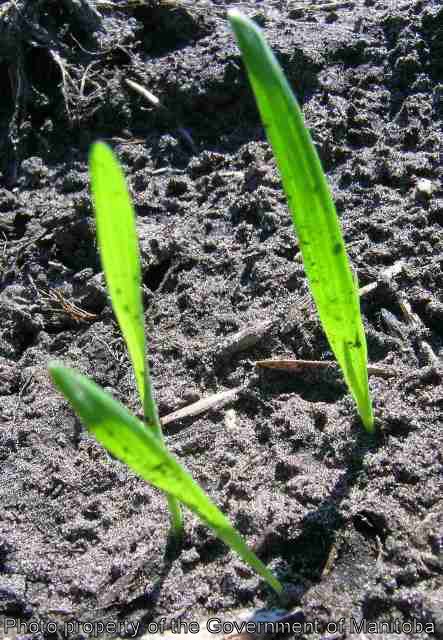 click to enlarge |
 |
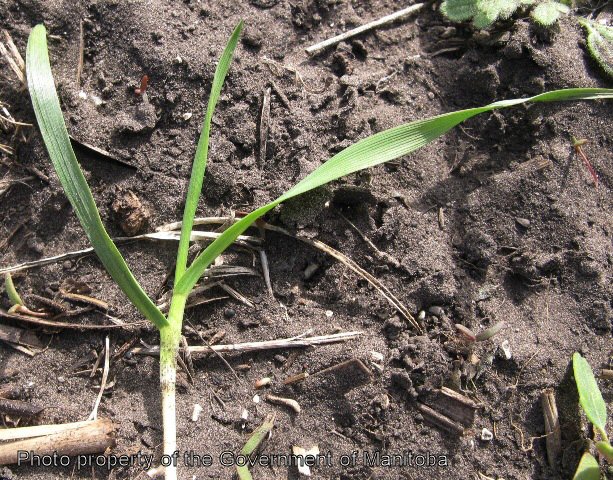 |
 |
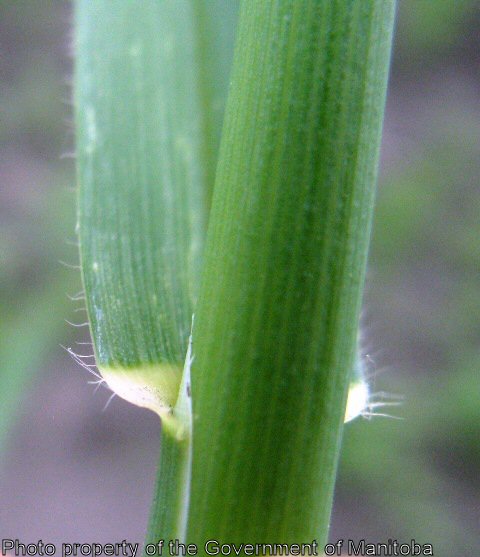 |
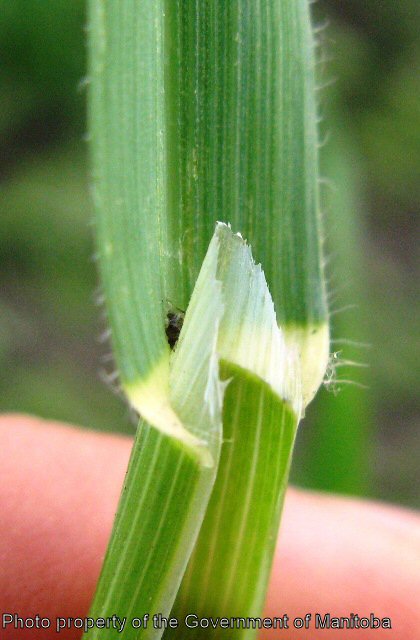 |
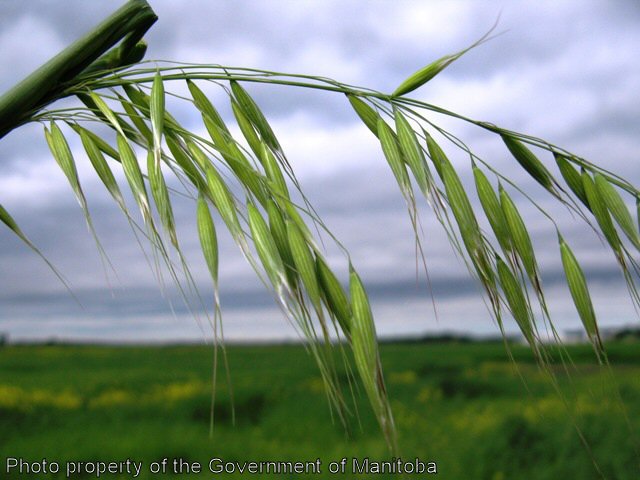 |
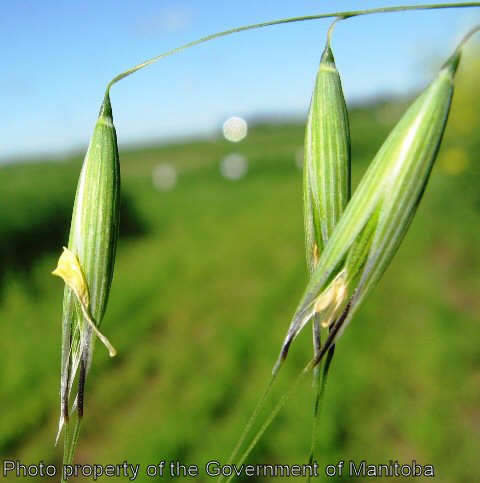 |
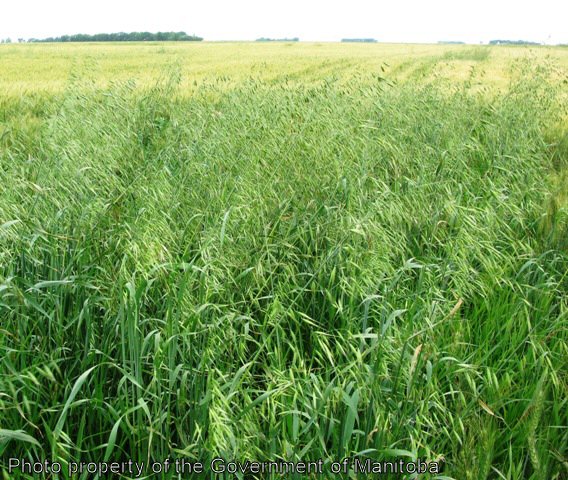 |
Biology
Wild oats is an annual weed, reproducing by seed. The seedling has a counter- clockwise leaf twist and no auricles. It has hairs on the leaf margins and a membranous ligule. In the mature plant, the stems are smooth, erect, and grow up to 150 cm (4 ft.) tall. The leaves are similar to tame oats. The head is an open panicle and the spikelets usually contain 2-3 florets (up to 7). The panicle may contain up to 250 seeds, ranging from black, brown, grey, yellow, to white.
The seeds are hairy at the base and awned with a circular scar at the point of seed attachment. They can remain dormant in the soil for 7 to 8 years but most seeds germinate within 2 years. Warm, dry, fall conditions promote the loss of seed dormancy but dormancy can be induced again the following spring under wet soil conditions and low temperatures. Wild oats prefer cool weather and moist soil.
Scouting Techniques
Take a minimum of 20 weed counts across the field. The key to identifying wild oats from wheat and barley is to look for the presence or absence of auricles (ear-like appendages wrapping around the stem where the leaf joins the stem). Wheat and barley possess auricles, while wild oats do not. Although this weed is usually randomly spread across a field, carefully check any low spots in the field for patches of wild oats, as wild oat prefers moist soils.
Be aware that herbicide resistance is a serious problem with wild oats, and make note of suspicious looking weed patches that may be resistant. The best time to scout for patches is after the wild oats have headed out and are visible above the crop.
Effects On Crop Quality
Wild oats in grain cause increased dockage.
Threshold/Yield Loss
Wild oats compete for light, moisture and nutrients, resulting in crop yield losses. Barley and canola (if stand is strong) are strong competitors, wheat is intermediate, and oats and flax are weak competitors.
Yield loss will depend on the number of wild oats per square metre and the stage of the wild oats and the crop. Wild oats is very competitive with wheat. Left unchecked, 10 wild oat plants per square metre (sq. yd.) can reduce wheat, barley and canola yields by 10% and flax yields by 20%. Additional yield loss and economic threshold information is available in the current Guide to Crop Protection.
Control Tips
Time of emergence of the crop relative to wild oats is critical in limiting the amount of yield loss wild oats will cause. The use of competitive crops (barley, canola, or wheat) in combination with practices that give the crop a jump on the weeds (shallow seeding, good seedbed preparation, proper fertility, herbicide burnoff or tillage timed close to crop emergence or seeding) will provide strong competition and limit the yield loss caused by wild oats.
Many herbicides are available for the control of wild oats, however, relatively few are non-Group 1 herbicides, and Group 1 wild oat resistance is a serious problem. Flax and pulse crops in particular have very few non-Group 1 herbicide options. Take the time to plan a herbicide rotation and ensure that you preserve your Group 1 herbicides for the crops that need them the most.
